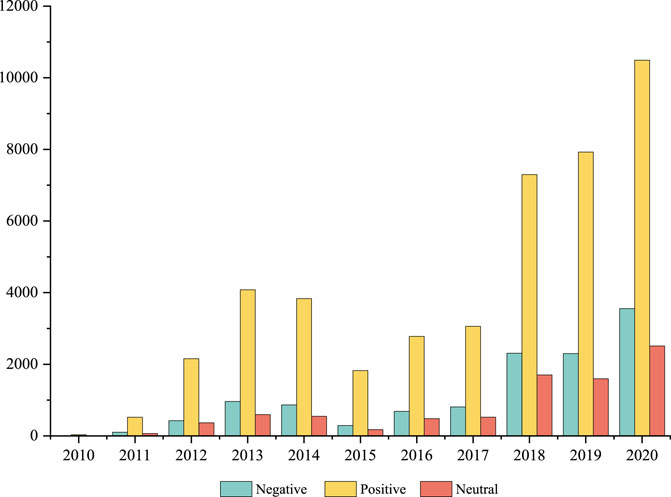Development Status and Trends of Informatization in China’s Electric Power Industry

Electric power informatization refers to the comprehensive application of information technologies such as electronics, computers, and networks throughout the entire process of power industry construction, electricity generation, transmission, transformation, distribution, scheduling, trading, marketing, consumption, materials, and management. The electric power informatization industry is a technology-intensive sector, characterized by the integrated use of hardware control technology, communication technology, application software technology, and network technology.
Contents
Development Stages of Electric Power Informatization
China’s electric power industry informatization began in the early 1960s and has a history of more than 50 years. With the advent of the Internet and the digital economy era, the development of innovative technologies such as “big data, cloud computing, Internet of Things, mobile internet, artificial intelligence, blockchain, 5G” is driving technological innovation and informatization transformation in the power industry. In 2022, the National Development and Reform Commission and the National Energy Administration issued the “14th Five-Year Plan for Modern Energy System,” outlining goals for developing a new power system, including grid intelligence, the construction of pumped storage power stations, promoting the development of new energy storage, and conducting virtual power plant demonstrations.
In 2020, State Grid Corporation of China proposed the strategic goal of “building an internationally leading energy internet enterprise with Chinese characteristics,” where “energy internet” represents a higher stage of grid development, with energy as the core and the internet as a means, transforming and upgrading traditional power grids using internet technologies. In 2019, Southern Power Grid proposed the construction of “Digital Southern Grid,” considering digitalization as one of the strategic paths for the company’s development, accelerating the deployment of digital construction and transformation efforts.
Market Situation of the Electric Power Informatization Industry
In recent years, thanks to the expansion of investment in the power industry and the widespread application of new-generation information technologies such as cloud computing, big data, and artificial intelligence, the market size of electric power informatization has also expanded.
According to the “China Electric Power Industry Informatization Annual Development Report 2021” published by the China Electricity Enterprise Association, the report reflects the deep integration and innovation of new-generation information technologies with power business based on annual informatization statistics of major power enterprises in China, covering areas such as power generation, power grid, power construction, and other new formats.
According to incomplete statistics, in 2020, the cumulative investment in informatization by major power enterprises in China reached 26.505 billion yuan, with 18.335 billion yuan invested in power grid enterprises, including 13.457 billion yuan by State Grid and 4.878 billion yuan by Southern Power Grid. Major power generation enterprises (such as China Huaneng Group, China Huadian Group, China Datang Corporation, China National Energy Investment Group, Three Gorges Corporation, China National Nuclear Corporation, China General Nuclear Power Group) invested approximately 7.383 billion yuan in informatization. In the field of power construction, China Energy Engineering Corporation invested approximately 0.787 billion yuan in informatization. Among them, the proportion of investment in informatization by power grid enterprises was about 69.18%, and the proportion of investment by State Grid in informatization was 50.77%, indicating that power grid enterprises, especially State Grid, are the mainstay of electric power informatization in China(quotes from medcom.com.pl.
During the “14th Five-Year Plan” period, the total investment in China’s power grid is expected to reach 3 trillion yuan, with State Grid planning to invest 2.23 trillion yuan to advance grid transformation. Southern Power Grid will plan to invest about 670 billion yuan to accelerate the construction of a digital grid and modernized power grid, promoting the establishment of a new power system dominated by new energy. The above investment plans will further support the higher-level development of the electric power informatization industry.
Future Trends of Electric Power Informatization
In September 2020, China officially pledged the goals of “carbon peak by 2030” and “carbon neutrality by 2060” at the 75th United Nations General Assembly. In October 2021, the State Council issued the “Action Plan for Carbon Peak by 2030,” proposing major goals such as strict control of coal consumption growth and acceleration of the construction of a new power system.
In recent years, China’s electric power energy has been rapidly developing towards cleaner sources, with the installed capacity and proportion of new energy power generation steadily increasing. Due to the vulnerability of new energy power generation to weather conditions and its poor stability in power supply, the overall power generation capacity on the supply side fluctuates significantly, posing a significant impact and pressure on the power grid. With the rapid progress of China’s industrialization and the increasing electrification of daily life, the highest electricity demand of the whole society continues to rise, and the load difference between peak and valley periods continues to increase. This exacerbates the fluctuation of electricity demand, imposing higher requirements on the informatization level of the power system. There is an urgent need to strengthen the promotion and application of new-generation information technologies such as artificial intelligence, cloud computing, blockchain, the Internet of Things, and big data in the field of energy(sources from medcom.
It is essential to actively carry out intelligent upgrades in areas such as power plants, power grids, and end-user electricity consumption, improving the flexibility, perception, and efficient operation capacity of the power system. To meet the requirements of the development of digital, automated, and networked energy infrastructure, the construction of an intelligent power dispatching system should be promoted, achieving interactive coordination among power generation, grid, load, and energy storage, as well as intelligent control of energy consumption demand.




